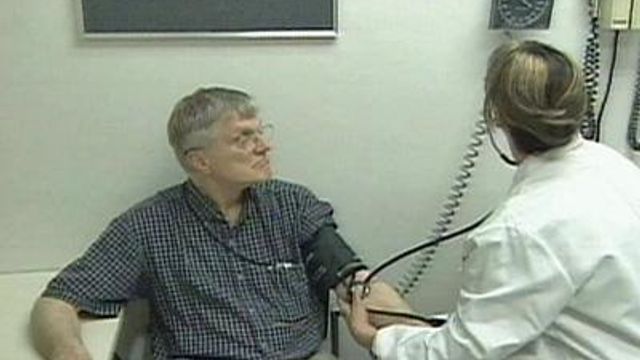Health Team
Study tests controlling blood pressure with Web-based care
Researchers wanted to see if monitoring blood pressure at home combined with e-mailing a registered pharmacist could help bring the condition under control.
Posted — UpdatedA study with Group Health Primary Care in Seattle posted in the Journal of the Medical Association examines a special home monitoring program for people with high blood pressure.
Nearly one in three adults in the U.S. has high blood pressure, but most do not get adequate treatment to keep it under control.
Paul Johnson suffers from high blood pressure. He said there were no warning signs when his blood pressure skyrocketed past the normal number of 120 over 80. Johnson said his blood pressure reached about 185-190 over 95, which “worried” him a great deal.
Johnson participated in the study of about 800 men and women who suffer from high blood pressure or hypertension.
Researchers wanted to see if monitoring blood pressure at home combined with e-mailing a registered pharmacist could help bring the condition under control.
“We proved in this trial that you can actually use web communications – that patients don’t have to come in. They can use the internet to receive care,” family physician Dr. Beverly Green said.
Researchers compared 3 groups. One received usual care. One had only home blood pressure monitoring while another also had web site communication with a pharmacist every 2 weeks.
“When you go into a doctor's office you only get one or two readings and that may not be your usual blood pressure,” Green said.
After a year 56 percent of the people who received web-based care and exchanged e-mail with a pharmacist had their blood pressure under-control. The study also showed that 31 percent of who received usual care had their blood pressure under-control.
“Patients with more severe hypertension are typically very hard to control and actually they did the best. They were… more than three times likely to have improved blood pressure control at the end of the study,” Green said.
Researchers said at the end of the study that those who received web-based care were on more hypertension medications and often at higher doses than those who received usual care.
Johnson’s blood pressure is now about 125 over 65. He said being aware of his blood pressure daily helped him make good decisions about his diet and medication.
Dr. Eric Peterson, a cardiologist at Duke Clinical Research Institute authored an editorial in JAMA. He said not everyone is ready for home blood pressure monitoring.
"Physicians lose three times over with that model in place. First, they'd have to pay for technology upgrades. They'd also have to pay for greater staff time to handle all the traffic over the system and any follow-up. On top of that, as the study suggests, it could lead to fewer patient office visits. Who can afford all that? Changes in reimbursement are clearly needed to stimulate wide spread adoption,” Peterson said.
Peterson also noted that even though computer technology is doing a better job than ever in connecting patients with their caregivers, it can only go so far.
• Credits
Copyright 2024 by Capitol Broadcasting Company. All rights reserved. This material may not be published, broadcast, rewritten or redistributed.





